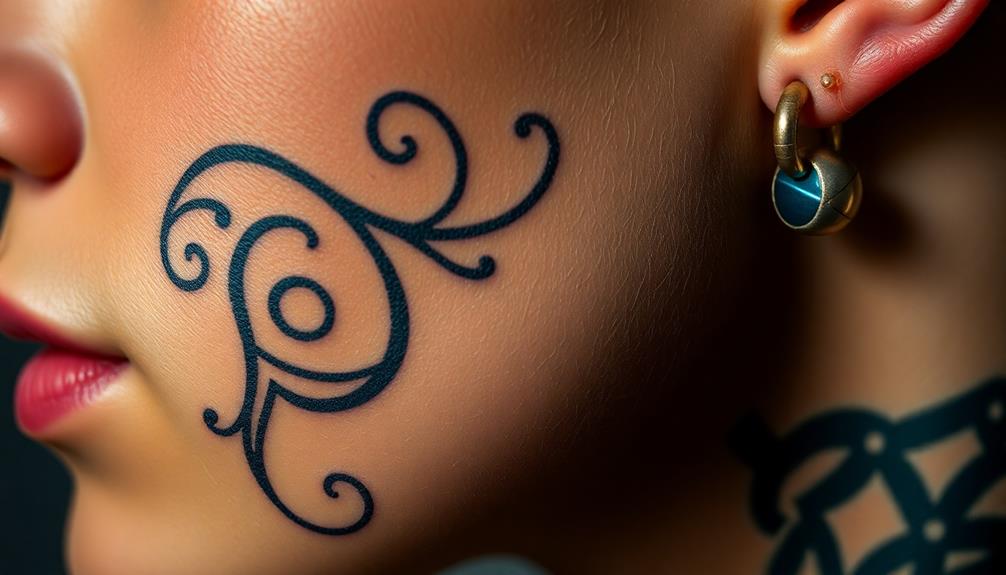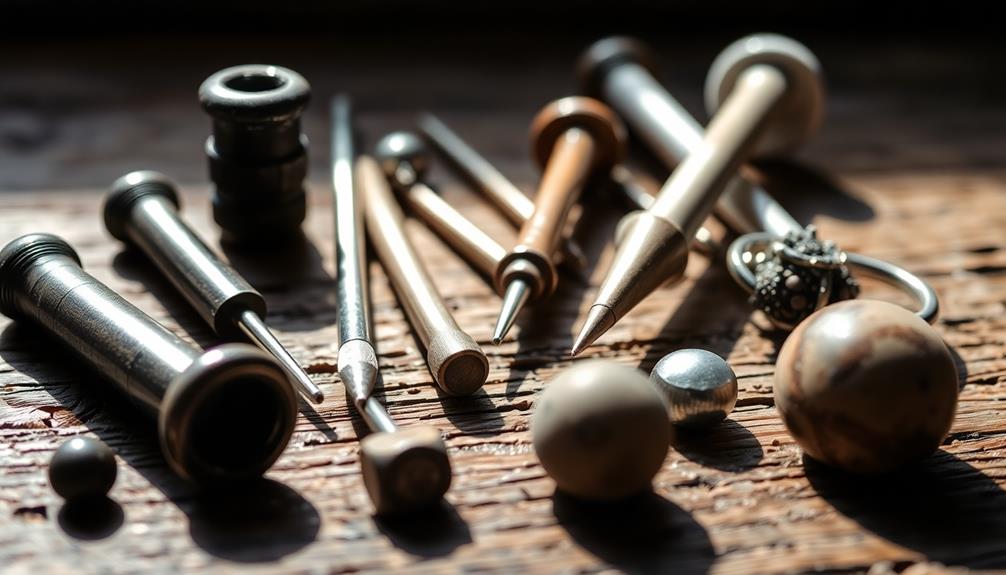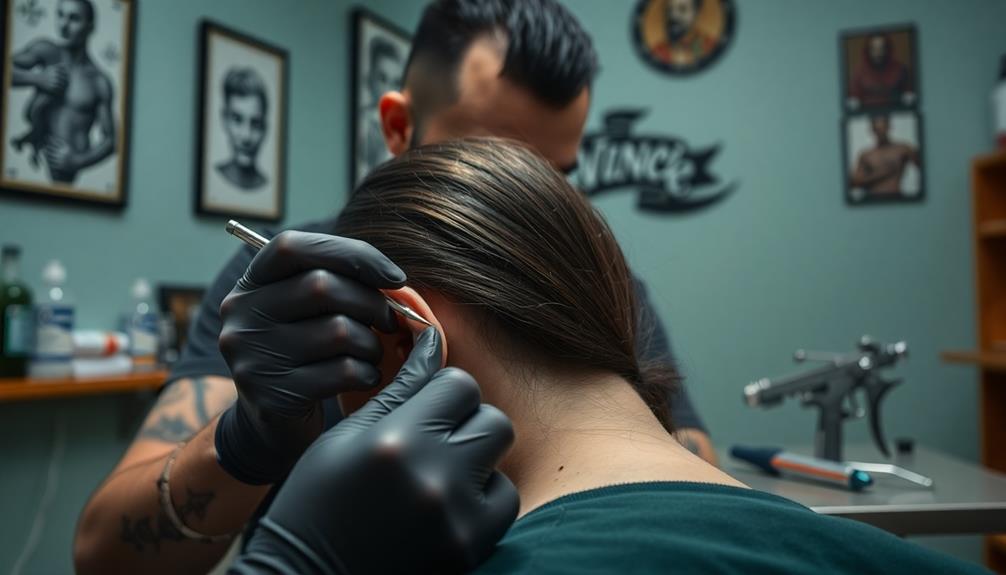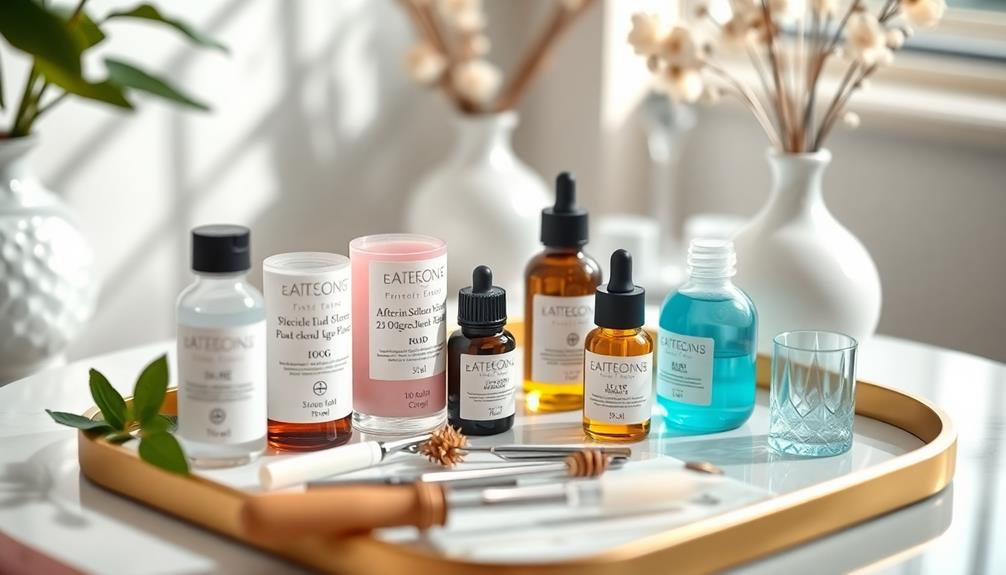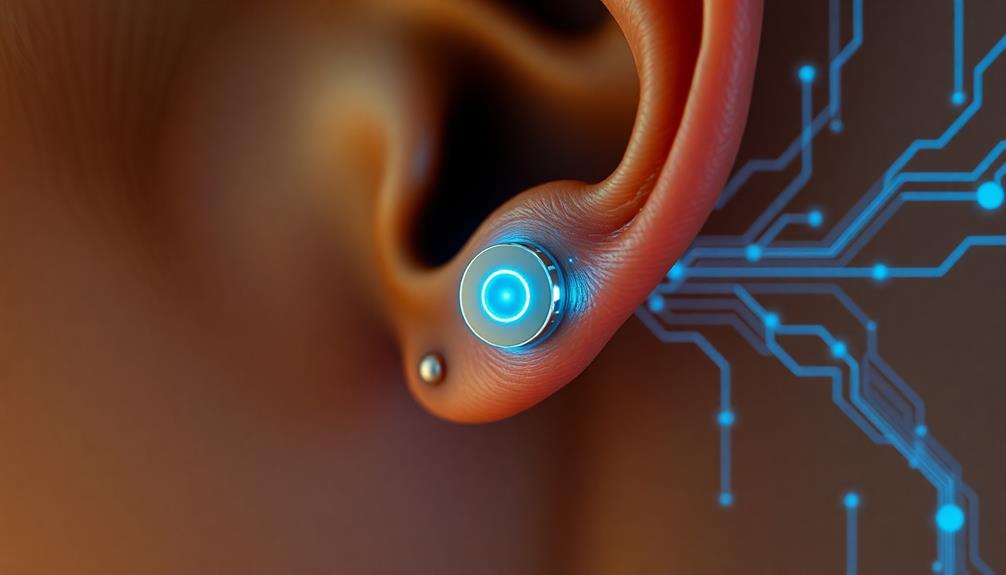Scarification and piercing are not just trendy; they're powerful forms of self-expression that push the boundaries of body modification. Scarification creates unique designs through controlled scarring, while piercing involves inserting jewelry into various body parts. Both practices carry deep cultural significance, marking rites of passage and personal narratives. As fashion evolves, so does the acceptance of these modifications, with social media celebrating diverse body art. However, it's essential to prioritize safety and aftercare to prevent complications. Want to explore how these practices connect individuals to their heritage and redefine beauty standards? There's more to uncover beyond the surface.
Key Takeaways
- Scarification and piercing are evolving forms of body modification that serve as powerful tools for self-expression and cultural identity.
- These practices illustrate a shift in beauty standards, as they challenge traditional norms and promote individuality and body positivity.
- Social media amplifies visibility and acceptance of body modifications, fostering communities that celebrate diverse expressions of personal narratives.
- Historical and cultural significance of scarification connects individuals to their roots, marking important life milestones in various traditions.
- Advances in techniques and materials enhance safety and comfort in body modifications, emphasizing the importance of professional care and proper aftercare.
Understanding Scarification and Piercing
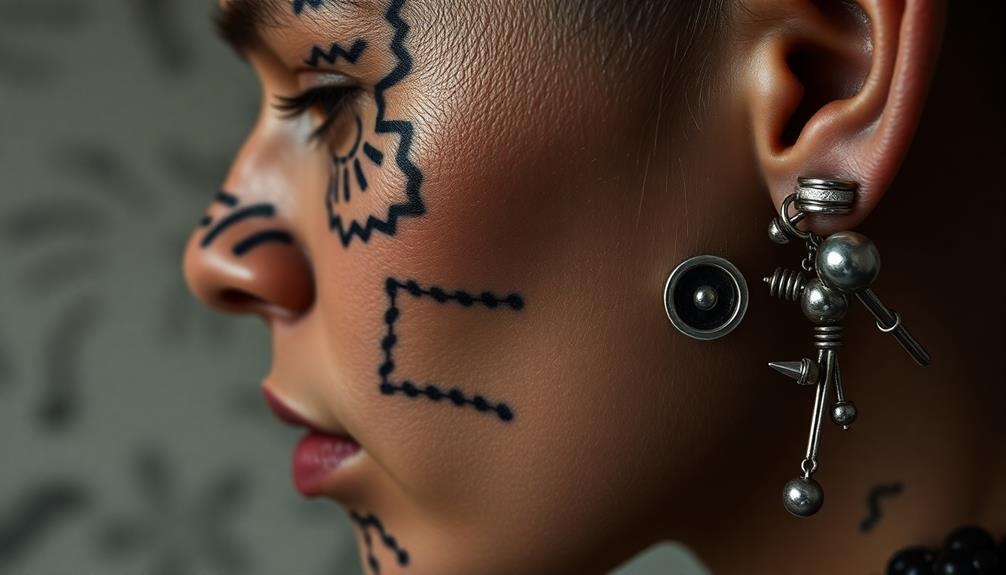
Scarification and piercing are increasingly popular forms of body modification that many people explore for personal expression. Both practices have deep historical significance, with piercing dating back thousands of years and scarification often symbolizing cultural identity.
As you consider these techniques, you'll find that scarification involves intentionally creating designs on the skin through controlled scarring, while piercing entails inserting jewelry into various body parts.
In contemporary culture, both scarification and piercing serve as powerful forms of self-expression. You can integrate personal narratives into your choices of designs and placements, allowing for unique individual identity.
Scarification techniques vary widely, including methods like ink rubbing to enhance scars or skin removal for larger markings. However, it's essential to be aware of the health risks associated with these practices, such as infection and keloid formation.
As you navigate this journey of body modification, remember that embracing these forms isn't just about aesthetics; it's also about connecting with your cultural roots and expressing your individuality.
Whether you choose scarification or piercing, you're participating in a rich tradition that continues to evolve in modern society.
Cultural Significance and History
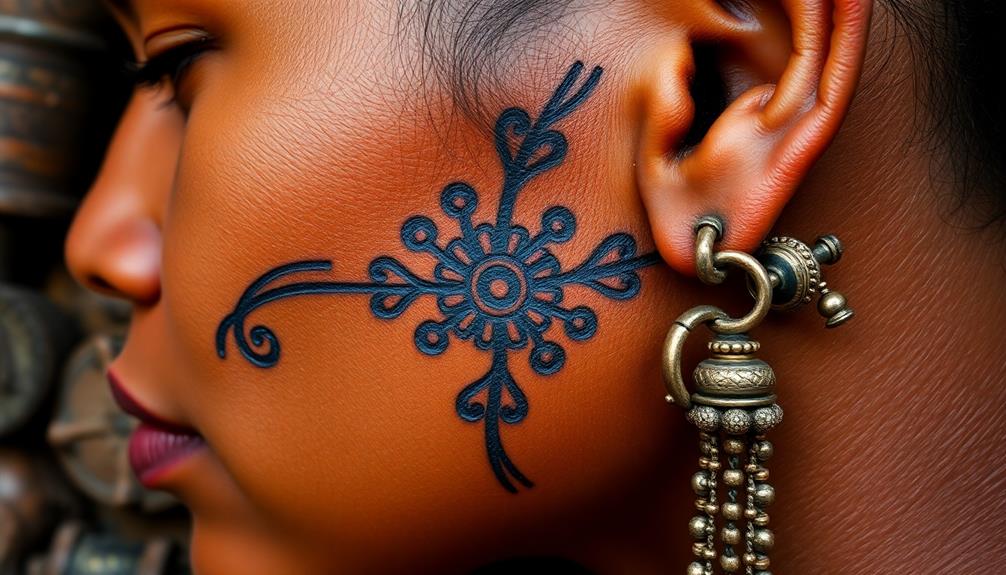
Body modification practices like scarification carry profound cultural significance and historical weight across various societies. For many indigenous cultures, scarification isn't just an art form; it's a rite of passage that marks significant milestones, such as moving into adulthood or motherhood.
Historical evidence shows that this practice has deep roots, especially among African tribes and ancient groups like the Maya, where intentional scarring patterns tell rich stories of identity expression.
In equatorial regions, you'll find scarification more prevalent than tattooing, mainly due to its visibility on darker skin, allowing for distinctive cultural expression. For instance, the Dinka of South Sudan utilize scars to signify readiness for important social roles, embedding both personal and societal meanings within their skin.
However, the stigmatization of scarification during the European colonial era led to a decline in its practices in some regions.
Yet, in contemporary indigenous communities, it remains a potent form of identity expression, reclaiming its significance and serving as a powerful reminder of cultural heritage and social identity.
Understanding this history enriches your appreciation of scarification as a meaningful body modification practice.
Contemporary Practices and Trends
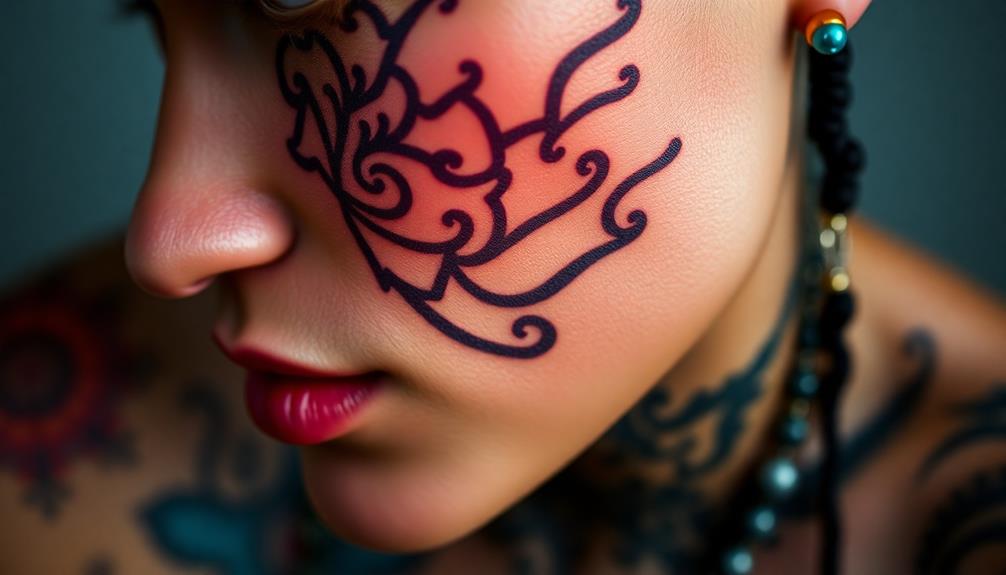
Embracing contemporary body modification practices, individuals are increasingly exploring scarification and piercing as powerful forms of self-expression. Scarification has evolved into a medium for intricate designs that often reflect personal narratives and social identities. Though still less popular than tattoos, it plays a crucial role in reclaiming one's story and challenging traditional beauty norms.
On the other hand, piercing techniques have expanded dramatically, introducing innovative styles like helix and tragus piercings that resonate with younger demographics. These trends showcase how piercing has become a canvas for individuality, allowing you to express your unique aesthetic.
Social media platforms have amplified this movement, creating communities that celebrate diverse styles and bolster societal acceptance of body modification.
Moreover, advancements in materials, particularly the rise of UV-medical resin, have enhanced comfort and safety for wearers. This lightweight, non-reactive option has revolutionized how you can approach body piercing.
As individuals embrace these contemporary practices, they're not just modifying their bodies; they're actively participating in a cultural shift that prioritizes self-expression over conformity. It's a bold step toward redefining beauty norms and celebrating personal identity through artful alterations.
Safety and Aftercare Considerations
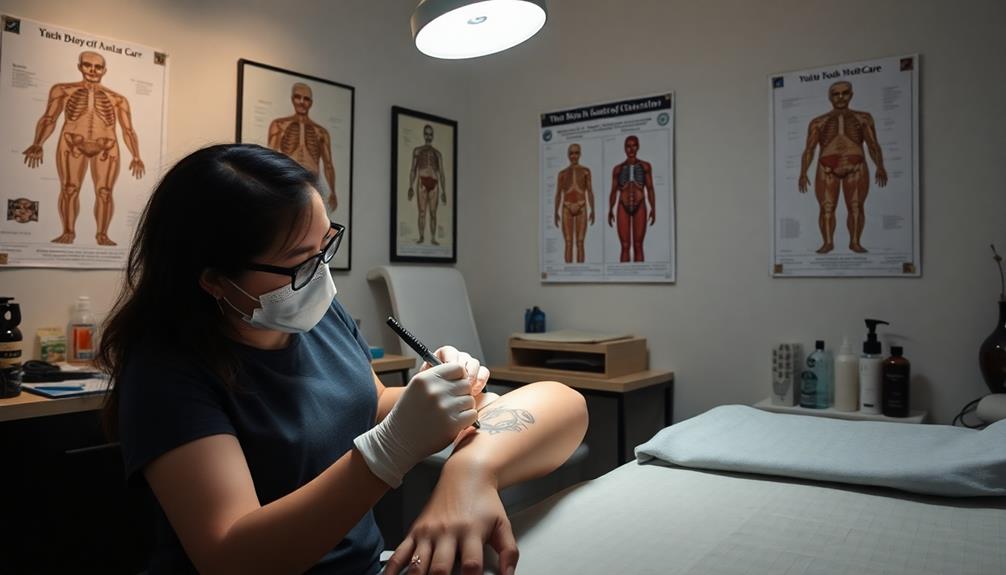
Exploring body modification comes with significant safety and aftercare considerations that can greatly impact your experience. Using sterile equipment is critical to prevent infections and complications during scarification or piercing. Aftercare plays an essential role in your healing process, so follow these guidelines:
| Procedure | Aftercare Tips | Monitoring Signs |
|---|---|---|
| Piercing | Clean with saline solution regularly. | Watch for excessive swelling or redness. |
| Scarification | Keep the area moisturized and protected. | Look for discharge or prolonged irritation. |
| Avoid touching or twisting jewelry. | Seek professional guidance if complications arise. | |
| Follow instructions from your artist. | Regularly check the healing progress. |
Making certain to monitor the area for any signs of complications is essential for both procedures. If you notice any unusual symptoms, don't hesitate to seek professional guidance. Proper aftercare, including moisturizing the scarified area and maintaining hygiene, will enhance healing and help achieve your desired aesthetic result. Following these steps can minimize risks and guarantee a successful body modification journey.
Fashion's Influence on Body Modifications
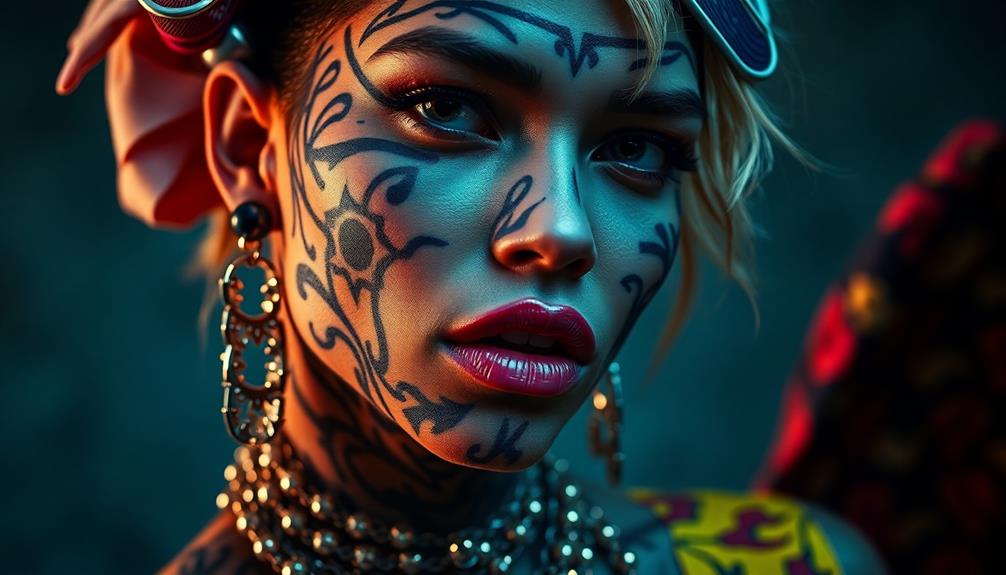
In recent years, fashion's embrace of body modifications has transformed how we perceive beauty and individuality. Designers increasingly showcase tattoos and piercings on runways, challenging traditional beauty standards and promoting inclusivity. This shift not only celebrates diverse aesthetics but also encourages self-expression, allowing you to embrace your unique style.
Social media amplifies this trend, making modified individuals more visible and accepted within contemporary fashion. As you scroll through platforms, you'll see an array of body art styles influencing trends and inspiring creativity. Customized clothing and accessories are now designed to highlight and complement these body modifications, reflecting a growing desire for personalization.
Models with visible tattoos and piercings are becoming trendsetters, pushing cultural norms and redefining what contemporary beauty looks like. This intersection of fashion and body modifications fosters an environment where individuality shines, empowering you to view your body as a canvas for self-expression.
Ultimately, this movement contributes to a broader narrative of body positivity and self-acceptance, encouraging everyone to celebrate their uniqueness. Embrace this evolution in fashion, and let your body modifications tell your story.
Frequently Asked Questions
What Is Scarification in Body Modification?
Scarification in body modification is when you intentionally create designs on your skin through controlled scarring. It's often a form of personal expression, influenced by factors like skin type, depth of cuts, and healing.
Are Piercings Considered Body Modification?
Yes, piercings are definitely considered body modification. They alter your body's appearance intentionally, allowing you to express personal style, embrace cultural meanings, and enhance aesthetics. Just remember to prioritize safety and hygiene during the process.
What Are the Effects of Scarification on the Body?
Scarification alters your skin's texture and appearance through controlled scarring. You might experience health risks like infection or keloid formation. Healing requires diligent aftercare, and the psychological impact can range from empowerment to regret.
How Does Body Modification Affect the Body?
Body modification affects your body in various ways. It triggers healing responses, can lead to complications like infections, and may impact your mental health, influencing how you perceive your modified self and your overall well-being.
Conclusion
In exploring scarification and piercing, you've uncovered not just forms of body modification, but also expressions of identity and culture. These practices challenge societal norms and invite you to reflect on personal choice. As you consider your own journey with body art, ask yourself: What does your body say about who you are? Embracing these modifications can empower you, but always remember to prioritize safety and self-expression in your choices.
Hi, my name is Danielle, and I’m an author for piercings-body.com. I have a passion for writing and love to share my knowledge on all things body piercing-related. I’m also a huge advocate for safe body modification practices and believe everyone should be able to make informed decisions about their bodies. When I’m not writing or blogging, I enjoy spending time with my family and friends, practicing yoga, and exploring new places.

